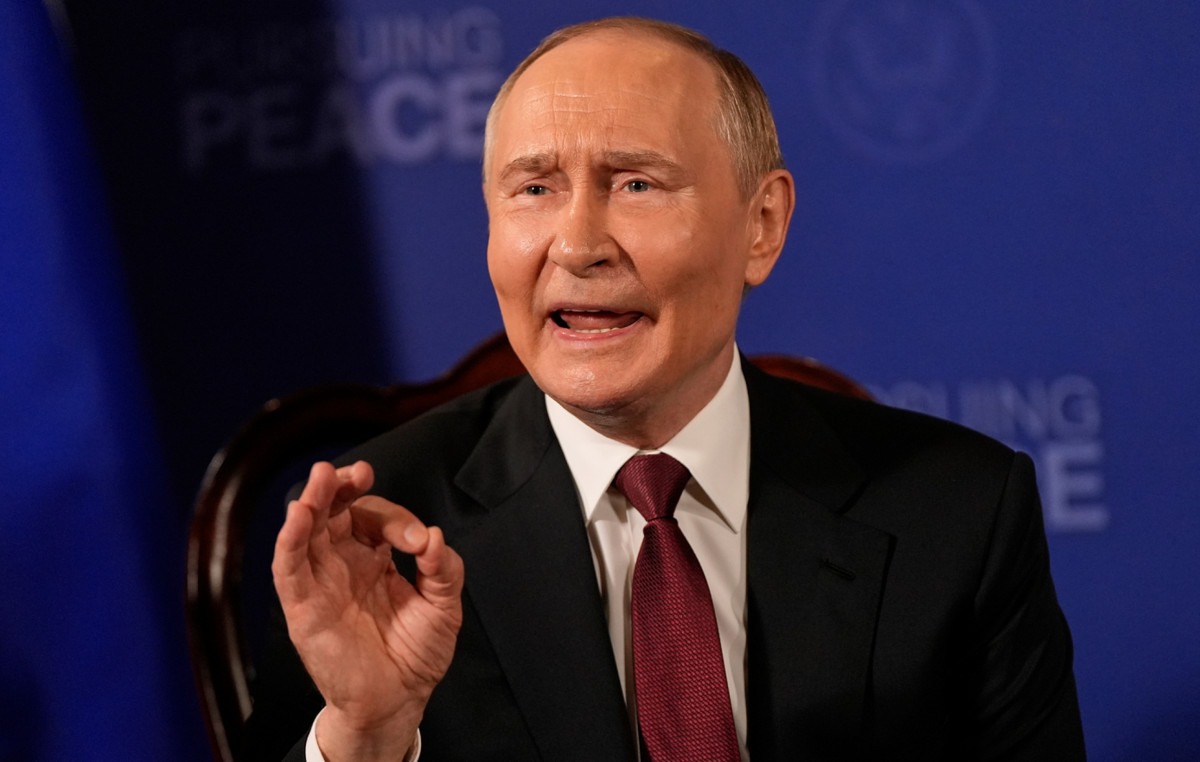He Central Bank of Mexico (Banxico) announced Thursday that it reduces its interest rates at 50 basic points until they are placed at 8.50%as expected. This is its lowest level since August 2022. In its statement the entity is committed to continuing to adjust the types in magnitude similar to today, although maintaining a restrictive position.
Banxico statement
The Governing Board of the Bank of Mexico decided to reduce the objective for the interbank interest rate to one day to a level of 8.50%, with effects from May 16, 2025.
It is estimated that during the first quarter of 2025 the global economic activity would have expanded at a lower rate than that observed in the previous quarter. Given commercial tensions, global economic perspectives and those of the United States in particular have been reviewed down. In this environment of high uncertainty, the dollar depreciated. Government interest rates closed the period with mixed movements, having decreased significantly along the curve. In most of the main advanced economies, the general and underlying inflation recently reversed the increases recorded at the beginning of the year. In its last decision, the Federal Reserve maintained its reference rate. Among the global risks, the escalation of commercial tensions and the aggravation of geopolitical conflicts, with possible impacts on inflation, economic activity and volatility of financial markets stand out.
Since the last monetary policy decision, in Mexico the interest rates of government values decreased, especially those of short and medium deadlines. ANDThe Mexican weight was appreciated, although it operated in a wide range. In the first quarter of 2025, the national economic activity again exhibited weakness. It presented a low expansion rate of 0.2% quarterly adjusted by seasonality, after the previous quarter. The environment of uncertainty and commercial tensions implies significant downward risks.
Both general and underlying inflation were 3.93% in April. The inflation of the underlying component accumulated eight consecutive months below 4%, although it increased in the margin. General inflation expectations for the closure of 2025 increased. The highest term remained relatively stable at levels above the goal.
Inflation forecasts were adjusted to the rise in the short term, to a large extent due to an increase in advance in the inflation of the goods. It is still waiting for general inflation to converge in the third quarter of 2026. The forecasts are subject to the following risks. Upward: i) exchange depreciation; ii) disruptions of geopolitical conflicts or commercial policies; iii) persistence of underlying inflation; iv) cost pressures; yv) climatic effects. Downward: i) a lower economic activity than anticipated; ii) a lower transfer of some cost pressures; and iii) that the transfer of exchange depreciation to inflation is less than anticipated. It is considered that the balance of risks regarding the trajectory planned for inflation on the forecast horizon, although it is kept on the rise, has improved as global clashes have been resolved. Changes of economic policy by the new US administration have added uncertainty to forecasts. Its effects could involve pressure on both sides of the balance.
The Governing Board reiterated that, by leaving behind the inflationary episode, the fight against inflation is at a stage in which it will be sought to take it from the current levels, around its historical averages prior to the pandemic, to the 3%goal. He valued that levels of the reference rate lower than those demanded by global shocks are consistent with the challenges presented this phase. This also considering the behavior of the exchange rate, the weakness of economic activity and including the possible impact of changes in commercial policies globally. Taking into account the current inflationary panorama, and the degree of prevailing monetary restriction, the Governing Board with the presence of all its members, unanimously decided to reduce the objective for the interbank interest rate one day to one day to a level of 8.50%. The Governing Board estimates that forward could continue with the calibration of the monetary position and consider adjusting it in similar magnitude. It provides that the inflation environment allow to continue with the cycle of cuts to the reference rate, although maintaining a restrictive position. It will take into account the effects of the weakness of economic activity, as well as the incidence of the restrictive monetary position that has been maintained and the one that continues to prevail about the evolution of inflation throughout the horizon in which monetary policy operates. The actions that are implemented will be such that the reference rate is consistent, at all times, with the trajectory required to promote the orderly and sustained convergence of general inflation to the 3% goal in the planned period. The Central Bank reaffirms its commitment to its priority mandate and the need to persevere in its efforts to consolidate a low and stable inflation environment.
USD/MXN reaction
He Mexican peso has reacted down after the statement, with the USD/MXN jumping at two days in 19.51. At the time of writing, the par quotes about 19.50, winning 0.60% daily.
This section was published as “Advance of the decision of Banxico: the Central Bank of Mexico is expected to cut the interest rates in 50 basic points”
- Banxico will announce its monetary policy decision today at 19.00 GMT.
- The Central Bank of Mexico is expected to cut interest rates at 50 basic points.
- The Mexican weight could experience volatility with the announcement.
The Central Bank of Mexico (Banxico) will announce this Thursday, May 15 at 7:00 p.m. its monetary policy decision. The market awaits a 50 basic points cut (PB), which would place interest rates in 8.5% from the current 9%.
Will the mild rise of inflation and moderation of Trump weigh on the decision of Banxico? The focus will also be in the Fed
Mexico reached a 11.25% historical maximum in its interest rates in April 2023, and kept it at that level until February 2024. In March last year, Banxico decided to start its cycle of cuts, although it stopped it until August, when it resumed the path of the flexibility of its Moentaria policy. Since the August meeting, the Central Bank has cut its types at all meetings, with 25 bp to December and 50 PB in February and March.
The market today expects a new reduction of 50 basic points (PB), which would leave interest rates in 8.5%, its lowest level since August 2022. This decision would diverge the position of the Federal Reserve of the United States, which at the May meeting maintained a restrictive position waiting for the progress of inflation and the repercussions of the tariff policy of President Donald Trump.
The Mexico inflation rose to 3.93% per year in April From 3.8% of March, while the underlying CPC also increased to 3.93% from the previous 3.64%. The general consumer price index reached its highest level in four months and slightly exceeded the consensus of 3.9% planned.
Since the data of Mexican inflation and the tariff reduction agreement between the United States and China were known, the Mexican weight has been appreciated with more forcefollowing the wake of the rise initiated in mid -April.
The Trump factor will be taken into account again by Banxico. The decisions regarding tariffs taken in recent weeks by the US president have promoted an improvement in the feeling in the market, especially after the United States and China agreed to reduce tariffs in the meeting they held in Switzerland last weekend. The Republican Executive announced that it reduced 30% Chinese products, while the Asian giant fell to 10% taxes on US goods.
Another aspect to take into account for Banxico could be the restrictive position of the US Federal Reserve, which decided to keep its rates at the May 7 meeting unchangedleaving its types in 4.5% per fourth consecutive meeting. The words of Jerome Powell, president of the Fedbetting on waiting for the data to support solidly a reduction can influence Banxico.
This Tuesday, The US published its April inflation data, showing a pricing softening. The dollar fell after the news and the USD/MXN reached new minimums of 2025 and the last seven months in 19.30 just one day later.
Both the statement of the last meeting of Banxico, in March, and the statements of the subgovernor of the Central Bank, Jonathan Heath, in recent days, support the 50 PB reduction today. According to Hath, there is still margin for additional rate reductions, qualifying them as “highly probable”, although it emphasized the need for caution given the persistent uncertainty in economic perspectives.
How would a 50 bp of Mexican weight affect? What if the cut outside 25 bp or there were no changes in the rates?
He Mexican peso could experience a strong rebound if Banxico announces that interest rates do not varycausing the USD/MXN to fall towards the psychological zone of 19.00. A rupture of this level could accelerate the fall towards the minimum of August 2024 around 18.42.
In the event that the reduction out of 25 basic points, we would also see a rise in the Mexican weight, although not as strong, pointing as the first objective of the USD/MXN the area of 19.11/19.06, where the minimum of October and September 2024, respectively, are respectively.
If the ad coincides with the consensus of cutting of 50 basic points, the weight should not vary much its price, since the market discounts this decision. In any case, the focus would then be in case the statement advances new cuts for the next meeting.
1 day graph of USD/MXN

BANXICO FAQS
The Bank of Mexico, also known as Banxico, is the central bank of the country. Its mission is to preserve the value of the Mexican currency, the Mexican weight (MXN), and set the monetary policy. For this, its main objective is to maintain low and stable inflation within the target levels – in or close to its 3%target, the midpoint of a tolerance band between 2%and 4%.
The main Banxico tool to guide monetary policy is the fixation of interest rates. When inflation is above the goal, the bank will try to control it by raising the rates, which makes the debt of homes and companies more expensive and, therefore, cools the economy. The highest interest rates are generally positive for Mexican weight (MXN), since they lead to higher yields, which makes the country a more attractive place for investors. On the contrary, lower interest rates tend to weaken the MXN. The rate differential with the dollar, or the way in which Banxico is expected to set interest rates compared to the United States Federal Reserve (Fed), is a key factor.
Banxico meets eight times a year and its monetary policy is very influenced by the decisions of the United States Federal Reserve (Fed). Therefore, the decision -making committee of the Central Bank usually meets a week after the Fed. In this way, Banxico reacts and sometimes anticipates the monetary policy measures set by the Federal Reserve. For example, after the Covid-19 pandemic, before the Fed raised the rates, Banxico first did it in an attempt to reduce the possibilities of a substantial depreciation of the Mexican weight (MXN) and avoid capital outputs that could destabilize the country.
Source: Fx Street
I am Joshua Winder, a senior-level journalist and editor at World Stock Market. I specialize in covering news related to the stock market and economic trends. With more than 8 years of experience in this field, I have become an expert in financial reporting.







